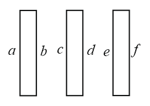Embibe Experts Solutions for Chapter: Electrostatics, Exercise 1: BEGINNER'S BOX - 1
Embibe Experts Physics Solutions for Exercise - Embibe Experts Solutions for Chapter: Electrostatics, Exercise 1: BEGINNER'S BOX - 1
Attempt the practice questions on Chapter 22: Electrostatics, Exercise 1: BEGINNER'S BOX - 1 with hints and solutions to strengthen your understanding. Beta Question Bank for Medical: Physics solutions are prepared by Experienced Embibe Experts.
Questions from Embibe Experts Solutions for Chapter: Electrostatics, Exercise 1: BEGINNER'S BOX - 1 with Hints & Solutions
In a neutral sphere, electrons are present. If percent electrons are removed, then calculate the charge on the sphere.
Can a body have a charge of : ?
Can a body have a charge of : 0.64 × 10-20 C ?
Can a body have a charge of : 4.8 × 10-21 C ?
A glass tumbler contains billion amoeba and two sodium ions are there on the body of each amoeba. Find out the charge contained in the glass.
How many electrons should be removed from a conductor so that it acquires a positive charge of ?
It is now believed that protons and neutrons (which constitute nuclei of ordinary matter) are themselves built out of more elementary units called quarks. A proton and a neutron consist of three quarks each. Two types of quarks, the so called ‘up’ quark (denoted by ) of charge and the ‘down’ quark (denoted by ) of charge together with electrons build up ordinary matter. (Quarks of other types have also been found which give rise to different unusual varieties of matter.) Suggest a possible quark composition of a proton and neutron.
Three parallel metallic plates, each area are kept as shown in the figure and charges , and are given to them. Edge effects are negligible. Calculate the charges on the two outermost surfaces and .

